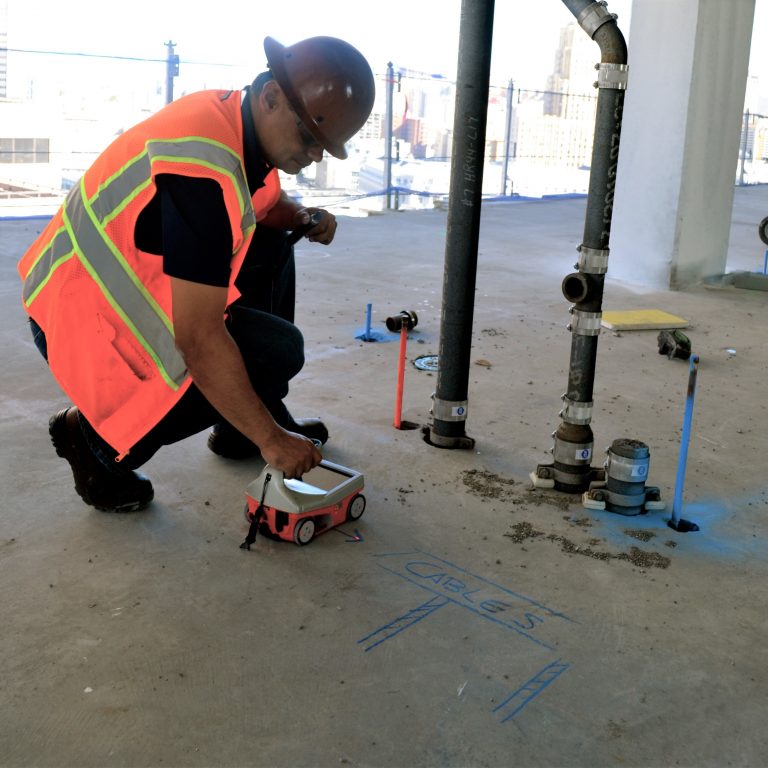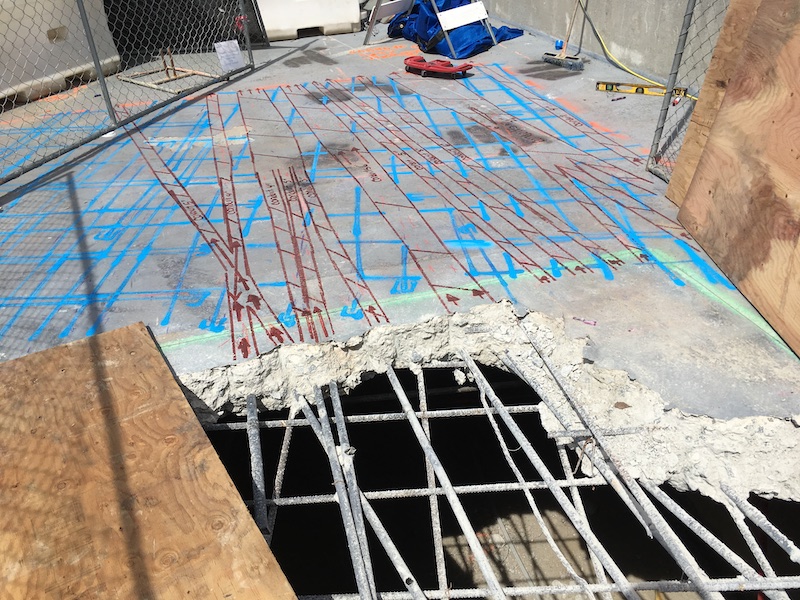RainierGPR Concrete Scanning: Professional Insights and Best Practices
RainierGPR Concrete Scanning: Professional Insights and Best Practices
Blog Article
Harness the Strategic Side of Concrete Scanning for Unparalleled Task Success and Quality Assurance
In the realm of modern building and construction and infrastructure development, the application of concrete scanning modern technology has emerged as an essential device for making sure job success and keeping high quality requirements. This cutting-edge approach uses a critical side by offering necessary insights into the structural honesty of concrete components, therefore making it possible for notified decision-making throughout the project lifecycle. By delving right into the depths of concrete make-ups and discovering hidden abnormalities, stakeholders can proactively resolve possible risks, simplify operations, and optimize source allowance. Nonetheless, truth power of concrete scanning lies not just in its ability to boost job results but likewise in its ability to reinvent traditional methods, establishing a brand-new benchmark for accuracy and performance in the building and construction industry.
The Relevance of Concrete Scanning
Concrete scanning is an essential action in construction projects to guarantee the safety and security and honesty of structures. By using different scanning innovations such as Ground Permeating Radar (GPR) and electromagnetic induction, building teams can non-destructively assess the subsurface of concrete structures to identify potential hazards like rebar, conduits, or post-tension cables. This information is vital for task specialists, designers, and supervisors to make enlightened choices and prevent expensive blunders during the construction procedure.
One of the primary reasons that concrete scanning is so crucial is its capacity to stop accidents and injuries on the building and construction site. Inadvertently cutting through a real-time electrical avenue or harmful post-tension cable televisions can have catastrophic effects, not just in terms of security but likewise in terms of job delays and financial ramifications. By performing comprehensive concrete scanning prior to any type of exploration, cutting, or coring tasks, building groups can reduce dangers and develop a more secure working atmosphere for everyone involved.
In enhancement to security factors to consider, concrete scanning also plays a crucial role in making certain the long-term durability and quality of the framework. By identifying any kind of anomalies or flaws concealed beneath the surface, such as spaces or delamination, very early intervention can be applied to attend to these concerns before they rise right into even more significant issues. Ultimately, spending in concrete scanning is a proactive measure that can save time, money, and sources over time, while also maintaining the highest possible standards of building and construction excellence.
Advanced Innovation for Exact Results

By integrating these sophisticated modern technologies into concrete scanning techniques, building groups can simplify workflows, lower project delays, and make certain the general top quality and success of the project. The precision and effectiveness provided pop over to these guys by these tools add dramatically to the job's success by helping with informed decision-making and improving top quality assurance actions.
Enhancing Job Performance and Timelines

Furthermore, concrete scanning allows groups to identify structural weak points and possible threats beforehand, allowing for prompt remediation and preventing crashes that might derail project timelines. The real-time data offered by scanning tools helps with educated decision-making, leading to smoother coordination amongst various professions and stakeholders. This improved cooperation reduces conflicts, boosts performance, and ultimately speeds up project shipment.
Additionally, by proactively resolving problems with concrete scanning, construction groups can comply with timetables better, minimize downtime, and optimize source allowance. The capability to identify surprise challenges and verify architectural stability efficiently adds to general job performance and timelines, making sure successful end results and client complete satisfaction.
Ensuring Safety and Threat Reduction

Risk reduction techniques can be enhanced with the detailed details provided by concrete scanning, enabling job teams to make enlightened decisions that lower the probability of unexpected cases. Furthermore, by properly mapping out subsurface problems, service providers can prevent pricey rework, delays, and damages to existing structures, further adding to general project security and success. Executing concrete scanning as a regular practice not just ensures a more secure workplace but additionally instills confidence in stakeholders regarding the task's commitment to high quality and threat administration.
Quality Assurance With Concrete Scanning
Concrete scanning plays a crucial role in maintaining top quality assurance criteria within building jobs. By making use of check my source advanced scanning technologies such as Ground Permeating Radar (GPR) and Concrete X-ray, project managers and designers can make certain the honesty and top quality of concrete frameworks. With concrete scanning, potential issues, such as spaces, cracks, or strengthening bar congestion, can be spotted non-destructively, enabling for prompt treatments to keep the architectural honesty of the task.
Quality guarantee with concrete scanning you can try this out not only helps in determining existing concerns yet also enables proactive measures to protect against future problems that might compromise the security and durability of the framework. By performing comprehensive scans at essential stages of building, teams can verify the accuracy of architectural strategies, verify the placement of important components, and attend to any kind of inconsistencies without delay. This aggressive strategy lessens rework, minimizes expensive delays, and eventually causes the shipment of premium, resilient structures that meet or go beyond industry criteria.
Verdict
In final thought, concrete scanning plays a vital role in guaranteeing task success, quality, efficiency, and security guarantee. The strategic edge offered by concrete scanning enables for positive threat reduction and improves general job monitoring.
In the world of modern-day building and facilities growth, the utilization of concrete scanning technology has actually arised as a crucial device for guaranteeing task success and keeping top quality requirements. By integrating these advanced technologies into concrete scanning methods, building and construction teams can enhance workflows, decrease job delays, and make sure the overall quality and success of the task.Given the essential nature of project efficiency and timelines in building and construction management, the emphasis now moves in the direction of making sure safety and security and mitigating risks within the project setting.Concrete scanning plays a critical role in promoting top quality guarantee requirements within building jobs. By making use of advanced scanning technologies such as Ground Permeating Radar (GPR) and Concrete X-ray, task supervisors and designers can make sure the integrity and high quality of concrete frameworks.
Report this page